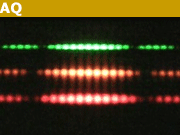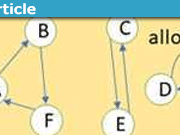Why You Can’t Quantum Tunnel Through a Wall
Table of Contents
Can You Quantum Tunnel Through a Wall?
The short and sweet answer if a tennis ball, a bowling ball, or any other kind of ordinary macroscopic object can tunnel through a wall is NO. You can’t quantum tunnel through a wall.
We periodically get questions on PF about people wanting to know if a tennis ball, a ping pong ball, a person, a cow, etc. can tunnel through a wall, or fall through the ground. This is due to an aspect or a consequence of quantum mechanics in which quantum particles have the probability of tunneling through a potential barrier and coming out on the other side of it.
This is a very good time for a lot of people, especially those who did not learn physics (or have not learned physics) formally, to make the realization that physics isn’t just “What goes up, must come down”. Physics is also “Where and when it comes down”. This means that physics isn’t just a qualitative description of something, it also contains a quantitative description of that something. There must be calculational numbers that come out that we can compare and verify with experiments.
To apply to this case. It isn’t just sufficient to indicate that there’s a possibility that tunneling of something is “possible”. One must also calculate the probability of that occurring. This is where the magnitude of it happening makes a huge difference. If the probability is extremely small, so much so that the chances of it occurring are negligible within the age of the earth or the universe, then call me crazy, but I’d say that it doesn’t occur! So when dealing with something like this, one has to consider both parts: the phenomenon is valid, and the quantitative aspect of it.
I did my Ph.D. work in tunneling spectroscopy in High-Tc superconductors. All I can say is that, throughout the 3 years of my experimental work, I WISHED it would occur as easily as people seem to make it! And I was doing tunneling by electrons, which is not a composite particle. In considering the tunneling of composite objects (objects made of more than one fundamental particle), there are extra complications that are not present when dealing with the tunneling of fundamental particles. Let me explain.
In electron tunneling, for example, the electron itself can already be described via the straight-forward wave function. And all we care about is the probability of that single electron tunneling across the potential barrier. However, when you have a composite particle, say an H2 molecule, for that to tunnel across, the whole molecule must tunnel across together! Think about it for a second. The molecule consists of 2 protons and 2 electrons. Already, due to their different charges, they see different potential barriers. If you set up a potential barrier to the electrons, the protons see this as being a potential well! It is almost impossible to set up one barrier that is uniform and identical to both the electrons and protons. What this results in is that the probability of tunneling for the protons and electrons will be very different from each other! Different parts of the molecule have different tunneling probabilities and different chances of coming out on the other side of the barrier. Essentially, this makes it very difficult to imagine the whole entity making it through together! This extra factor is not present in the tunneling of a fundamental particle.
Not only that, there is another issue at hand. When we try to detect quantum effects of larger objects, such as buckyballs, etc., the most important characteristic that the system must have is that the entire entity (buckyball, 10^11 electrons, etc.) must be in a coherent state with each other. Having such phase coherence is one of the most fundamental aspects of a quantum property. This is why in experiments done on buckyball interference, the molecule had to be cooled down and isolated until all parts of the buckyball were in coherence with each other. It wasn’t easy to detect quantum state at this scale, and one had to go through a lot of crazy gymnastics for that to occur. And this is to do something “simpler”, i.e. 2-slit interference. Think of how much more difficult it is to make that buckyball tunnel through a potential barrier, consider the extra difficulty factor that I mentioned above.
Conclusion
This is why many of us in physics shake our heads when someone outside of physics only understands a phenomenon or a principle superficially and then decides to extrapolate it into other areas. The Deepak Chopras of the world often like to justify and validate many of their pseudo-scientific beliefs by invoking the “mystical” consequences of quantum mechanics. They do this without any kind of a quantitative understanding of quantum mechanics, and thus, are completely clueless to the scale of such events, and whether such things are well-defined and likely to occur.
PhD Physics
Accelerator physics, photocathodes, field-enhancement. tunneling spectroscopy, superconductivity








Leave a Reply
Want to join the discussion?Feel free to contribute!